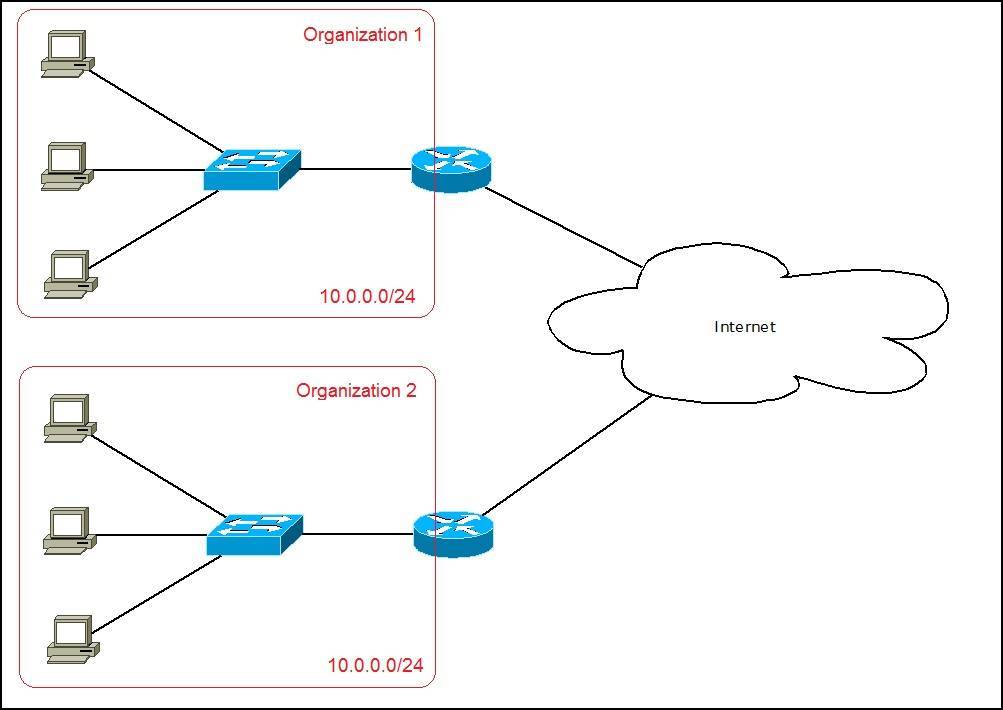Private IP addresses
The original design of the Internet specified that every host on every network should have a real routable IP address. An organization that wanted to access the Internet would complete some paperwork, describing its internal network and the number of hosts on it. The organization would then receive a number of IP addresses, according to its needs. But there was one huge problem with this concept – if every host on every network in the world was required to have an unique IP address, we would have run out of IP addresses to hand out a long time ago!
The concept of private IP addressing was developed to address the IP address exhaustion problem. The private IP addresses can be used on the private network of any organization in the world and are not globally unique. Internet routers are configured to discard any packets coming from the private IP address ranges, so these addresses are not routable on the Internet.
Consider the following network:
In the picture above you can see that two organizations use the same private IP network (10.0.0.0/24) inside their respective internal networks. Because private IP addresses are not globally unique, both organizations can use private IP addresses from the same range. To access the Internet, the organizations can use a technology called Network Address Translation (NAT), which we will describe in the later lessons.
There are three ranges of addresses that can be used in a private network:
- 10.0.0.0 – 10.255.255.255
- 172.16.0.0 – 172.31.255.255
- 192.168.0.0 – 192.168.255.255




